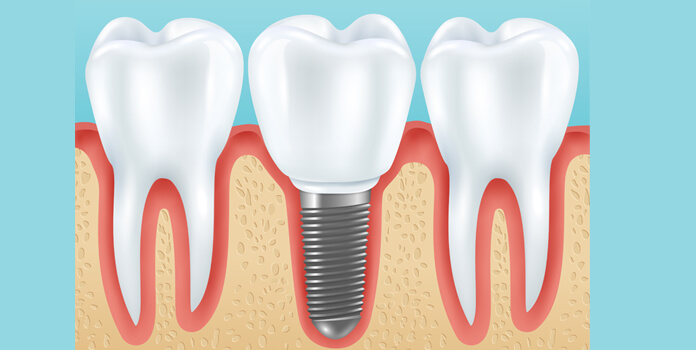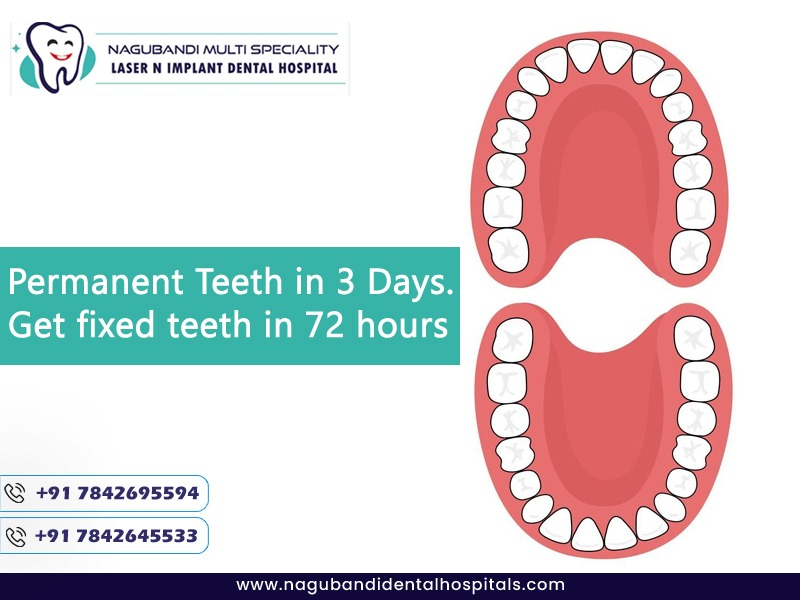Dental implants are a popular and effective solution for replacing missing or severely damaged teeth. They are designed to provide a foundation for replacement teeth that look, feel, and function like natural teeth. The person who has lost teeth regains the ability to eat virtually anything and can smile with confidence, knowing that teeth appear natural and that facial contours will be preserved. The implants themselves are tiny titanium posts that are surgically placed into the jawbone where teeth are missing. These metal anchors act as tooth root substitutes. They are surgically placed into the jawbone. The bone bonds with the titanium, creating a strong foundation for artificial teeth. Small posts that protrude through the gums are then attached to the implant. These posts provide stable anchors for artificial replacement teeth. Dental implants also help preserve facial structure, preventing bone deterioration that occurs when teeth are missing.
Dental implants are a popular and effective solution for replacing missing or severely damaged teeth. They are designed to provide a foundation for replacement teeth that look, feel, and function like natural teeth. The person who has lost teeth regains the ability to eat virtually anything and can smile with confidence, knowing that teeth appear natural and that facial contours will be preserved. The implants themselves are tiny titanium posts that are surgically placed into the jawbone where teeth are missing. These metal anchors act as tooth root substitutes. They are surgically placed into the jawbone.
The bone bonds with the titanium, creating a strong foundation for artificial teeth. Small posts that protrude through the gums are then attached to the implant. These posts provide stable anchors for artificial replacement teeth. Dental implants also help preserve facial structure, preventing bone deterioration that occurs when teeth are missing.

Why are immediate dental implants better?

Immediate dental implants are considered better for several reasons:
Time-saving: Immediate dental implants are placed during the same visit as the tooth extraction, saving patients time and reducing the need for multiple surgeries. This is particularly beneficial for patients who wish to minimize the duration of their dental restoration process.
Aesthetic Benefits: They allow for the immediate placement of a provisional crown, which can provide aesthetic and functional benefits right away. This can be especially important for implants in visible areas, helping to maintain the appearance of the patient’s smile.
Preservation of Bone Structure: Placing implants immediately after tooth extraction can help preserve the jawbone structure. When a tooth is extracted and not immediately replaced, the area of the jawbone that supports the tooth can begin to deteriorate over time. Immediate implants stimulate the bone, helping to prevent this bone loss.
Reduced Treatment Complexity: By consolidating the tooth extraction and implant placement into one procedure, immediate implants can reduce the overall complexity of the treatment. This can lead to fewer complications and a smoother healing process.
Improved Comfort and Healing: For some patients, immediate implants may result in reduced pain and discomfort post-surgery, as the number of surgical interventions is minimized. This can also potentially lead to a quicker overall healing process.
However, it’s important to note that not all patients are candidates for immediate dental implants. Suitability depends on various factors, including the health of the jawbone, the location of the missing tooth, and the patient’s overall health. Consulting with a dental professional is essential to determine the best treatment plan for each individual’s needs.
Immediate dental implant procedure

The process of getting dental implants involves several steps:
-
Dental Examination: Detailed dental exams, including X-rays and, in some cases, 3D images and models made of your mouth and teeth.
-
Treatment Planning: Tailored to your specific situation, considering factors like the number of teeth needing replacement and the condition of your jawbone.
-
Surgical Placement: The implant is surgically placed into the jawbone. There’s a healing period that follows, which can last several months, allowing the implant to osseointegrate, or fuse, with the jawbone.
-
Abutment Placement: Once the implant has bonded with the jawbone, a small connector post called an abutment is attached to the post to securely hold the new tooth.
-
Artificial Tooth Placement: After your gums heal, more impressions of your mouth are made, and the final tooth or teeth are created. These can be individual crowns, implant-supported bridges, or dentures anchored to implants.
Dental implants are considered the gold standard for tooth replacement due to their durability, longevity, and the way they mimic natural tooth function, which can significantly improve quality of life.
It’s important to note that immediate dental implants are not suitable for everyone. The ideal candidates are those in good overall health, with sufficient jawbone to support the implant, and without active periodontal disease. A thorough evaluation by a dental professional is necessary to determine if immediate dental implants are the best option based on an individual’s specific circumstances. For more information please visit our website https://nagubandidentalhospitals.com/ or reach us at 7842695594, 040-40213678
nagubandidentalhostpital@gmail.com.



